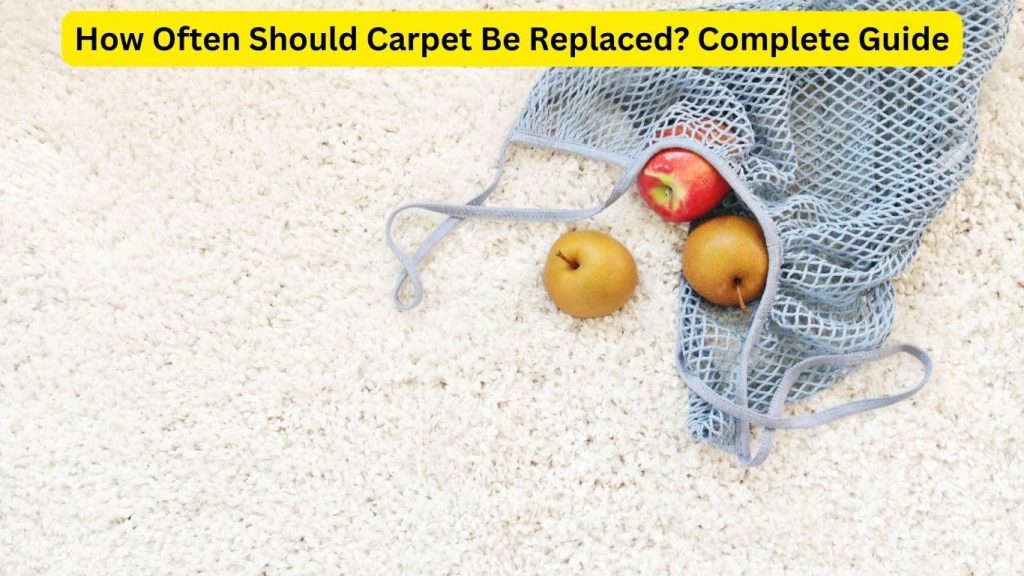When it comes to home flooring, carpeting is a popular choice due to its softness, warmth, and aesthetic appeal. However, carpets are not invincible and require regular maintenance and eventual replacement to maintain their condition and functionality.

The lifespan of a carpet depends on various factors such as quality, usage, and maintenance. While there is no fixed timeline for replacing carpets, it is generally recommended to consider replacement every 8 to 10 years for residential use.
Factors like heavy foot traffic, pets, and spills can accelerate wear and tear, leading to the need for a replacement sooner. By understanding the signs of wear and taking proactive measures to maintain your carpet’s quality, you can ensure a comfortable and visually pleasing flooring experience in your home.
Table of Contents
How Long Does Carpet Last?
The lifespan of a carpet can vary depending on several factors, including the quality of the carpet, the amount of foot traffic it receives, the level of maintenance and care it receives, and the overall usage.
On average, a well-maintained carpet can last between 8 to 10 years in residential settings.
However, some high-quality carpets with proper care can last even longer, up to 15 years or more.
Commercial carpets, which are designed to withstand heavy traffic, tend to have a shorter lifespan and may require replacement every 5 to 7 years.
It’s important to note that these are general estimates, and individual circumstances may differ.
Regular cleaning, stain removal, and proper maintenance can help extend the life of your carpet.
How Do I Know When My Carpet Needs Replacing?
There are several indicators that can help you determine when it’s time to replace your carpet. Look out for signs of significant wear and tear, such as fraying, bald spots, or matting. Stains and odors that are difficult to remove despite cleaning efforts can also be a signal.
Additionally, if your carpet is more than 8 to 10 years old and shows signs of decreased padding or has lost its original color and texture, it may be time to consider replacement. Ultimately, trust your judgment and consider consulting with flooring professionals for their expert advice.
How Often Should I Replace Carpet? Complete Guide
The frequency of replacing carpet depends on various factors, including the quality of the carpet, the amount of foot traffic it receives, and how well it is maintained. On average, carpet can last anywhere from 5 to 15 years.
However, there are certain signs that indicate when it’s time to replace your carpet. Here’s a complete guide to help you determine when you should replace your carpet:
Wear and Tear:
Over time, carpets can show signs of wear and tear, especially in high-traffic areas. If you notice extensive fraying, matting, or bald spots that cannot be fixed with cleaning or repairs, it’s a clear indication that replacement is necessary.
Stains and Discoloration:
Despite regular cleaning, carpets are prone to stains and discoloration, especially if spills are not promptly addressed. If your carpet has stubborn stains or has become significantly discolored, even after professional cleaning attempts, it may be time for a replacement.
Odors and Allergies:
Carpets can trap odors and allergens, leading to unpleasant smells and triggering allergic reactions. If your carpet emits persistent and unpleasant odors, or if you or your family members experience increased allergy symptoms, it might be beneficial to replace the carpet, especially if deep cleaning and deodorizing efforts haven’t been effective.
Damage from Moisture or Mold:
If your carpet has been exposed to excessive moisture, such as from leaks or flooding, it can lead to mold and mildew growth. Moldy or water-damaged carpets pose health risks and should be replaced to prevent further damage and potential health issues.
Padding Deterioration:
The carpet padding, which provides cushioning and insulation, can wear out over time. If you notice unevenness, lumps, or sagging areas on your carpet, it may indicate that the padding has deteriorated. In such cases, replacing both the carpet and padding is recommended for optimal comfort and durability.
Outdated Style:
If your carpet looks outdated and no longer matches your aesthetic preferences or interior design, you may choose to replace it for a fresh and updated look.
Lifestyle Changes:
Major lifestyle changes can also warrant carpet replacement. For example, if you have recently acquired pets, children, or individuals with allergies, you might consider replacing your carpet with a more pet-friendly, stain-resistant, or hypoallergenic option.
Read Next:
Final Words
The frequency of carpet replacement varies based on factors such as quality, foot traffic, and maintenance.
On average, carpets last between 5 to 15 years. Signs of wear, stains, and changes in personal style indicate the need for replacement. Advancements in carpet technology offer more durable options.
By staying attentive and replacing carpets when necessary, you can enhance the comfort and aesthetics of your home.
